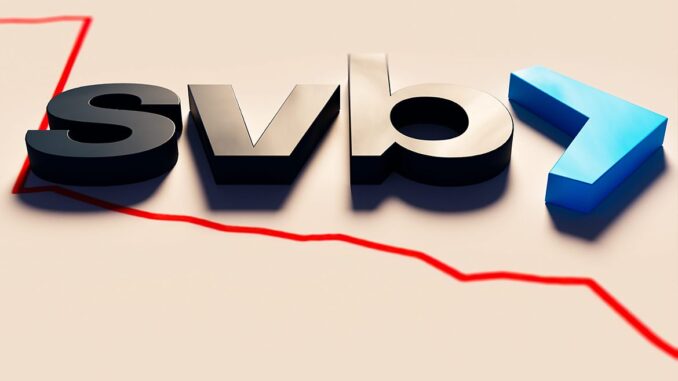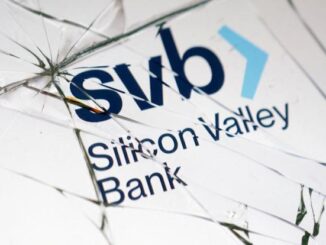
The collapse of Silicon Valley Bank is raising questions about lending to the tech sector, which has had a growing presence in both the institutional syndicated loan market and the private credit market in recent years.
SVB has been a lender and venture capital provider to tech start-ups, often smaller, early-growth stage companies. Tech borrowers that would issue debt in the syndicated loan market have tended to be larger, more mature companies.
SVB is a lender in some syndicated loans, for issuers such as infrastructure software company Quest Software, storage and network security company Barracuda Networks, and anesthesia and perioperative services provider Napa Management.
It is also a lender in private credit transactions. According to stories tracked by LCD, SVB has been a lender to 17 private credit transactions since 2019. For context, LCD News reported on over 2,000 private credit transactions since the start of 2019.

In recent years, tech and software loans have become increasingly prevalent in the loan market. A frenzy of pandemic-era deal-making involving technology companies has driven a surge in lending to software and data companies, which is the largest industry in the institutional loan market, LCD data shows.
Leveraged loans to borrowers from the software sector currently total a record $170 billion, or 12% of the $1.4 trillion leveraged loan asset class, as tracked by the Morningstar LSTA US Leveraged Loan Index. And 52% of these loans are rated B-minus by S&P Global Ratings, putting them at the lower end of the credit quality distribution.

M&A and buyout activity in the tech sector exploded as a result of Covid trends: remote work, online business services, and video medical visits all accelerated tech investment.
Beginning in the second half of 2020, consensus formed among investors that software and data companies were pandemic-proof, or insulated from a sudden drop in revenue, unlike many other industries.
Especially sought-after were enterprise software providers, which typically have high free cash flow to pay interest and lower capex needs. They are also known for a high rate of customer renewals due to heavy costs of switching to another software system. Focus was also on software considered vital to a business.
Indeed, Orlando Bravo, co-founder of tech-focused private equity firm Thoma Bravo, said at the time that revenue from software was more reliable than rent during the pandemic.
Many investment decisions taken during this time are likely to be vindicated. However, as always during times of excess in credit, some borrowers received loans that they will be unable to repay.
As risk aversion has increased in credit markets, attention has been drawn to so-called “add-backs” in EBITDA, which allowed borrower companies and private equity sponsors to add back one-off expenses to earnings. Investors are also taking a closer look at which software is indeed mission critical.
Many of the largest-ever buyout deals in the computers & electronics sector, which had traditionally been LCD’s proxy for technology, closed after the pandemic unfolded. Typically, these transactions were skewed toward the lower end of the credit quality spectrum — 56% of 2021 issuance from this sector came from borrowers rated B-minus by at least one ratings agency. This compares to a 40% share in the overall market that year.

As for performance of these loans that are prevalent in the market, investors are signaling expectations of stress in loans backing software companies. As of March 10, 15% of loans in the Morningstar LSTA US Leveraged Loan Index that were priced below 80 cents on the dollar — an anecdotal measure of distress — backed software companies. This puts software as the second-largest sector for distressed loans in the index.
This, coupled with the sector’s high concentration of lower ratings, brings cause for concern to future default risk.
Nevertheless, boding well for the software sector is its resilience during the last economic cycle. Technology crossed the 10% index share way back in 2016 following a spectacular post-financial-crisis boom period (from just 3% at the end of 2008), and despite this massive growth spurt, defaults from the sector remain few and far between.
Between 2015 and the end of 2022, only six companies from the technology sector defaulted on term loans tracked by the index. During the same period, 17 retail companies defaulted on loans, as competition from online retailers compounded the troubles of heavily indebted brick-and-mortar chains. Companies tied to the oil and gas sector, meanwhile, racked up 30 loan issuer defaults — the most of any sector — thanks to the sharp decline and ongoing volatility in oil prices since 2014.
On Friday, the average bid of software loans tracked by the index declined by 21 bps, to 92.29, in line with the decline in the overall index, down 22 bps to 93.99. Software names are now priced at a 170-bps discount to the broad index. The gap between the two cohorts began to widen out in late September, from just 13 bps at the end of August to 98 bps by the end of third quarter of 2022.

Private credit to the rescue
Enthusiasm for the sector was near peak in the syndicated loan market when financing backing an acquisition of Citrix Systems Inc. stumbled. The loan’s syndication process coincided with extreme market volatility, leaving the banks that agreed to arrange the debt saddled with loans that they could not sell on to investors, as is usual in the syndicated loan market.
The result of excess Citrix Systems loans on banks’ balance sheets, combined with rising interest rates, has hampered deal financing activity in the syndicated loan market, beginning late in the first quarter of 2022. Since the syndicated loan market went quiet, many of these deals quietly moved into the private credit market.
Heavy fundraising in private credit meant that private credit providers were willing and able to provide loans to the sector, particularly for buyouts. By mid-2022, private credit providers were believed to have 100% market share of large buyouts.
Happy to fill a void left by the syndicated loan market for this lucrative business, private credit providers stepped up, placing loans into private credit funds, listed and non-listed business development companies (BDCs), and CLOs. Loans closed at terms that were comparable to those available at peak credit market conditions in the broadly syndicated loan market, but were no longer available in that market.
Private credit providers championed the unitranche loan, which combines senior and junior debt into a simplified structure. They argued it was more efficient than the complex structure typically available in the syndicated loan market with senior and junior tranches.

What’s more, private credit lenders — not banks — have been willing to underwrite a riskier structure, called the recurring revenue loan. Demand for these loans has likely contributed to the migration of deals to the private credit market, where deals were executed faster and without ratings, away from the syndicated loan market. Loans of this type also grew larger, breaking records, despite risk aversion elsewhere in credit.
Recurring revenue loans are underwritten on revenue streams, rather than EBITDA. The loans are typically structured to switch to EBITDA-based covenants after a time.
The recurring revenue structure is particularly useful for borrowers in a growth phase. Most recurring-revenue borrowers have been software companies.


Source: pitchbook.com



